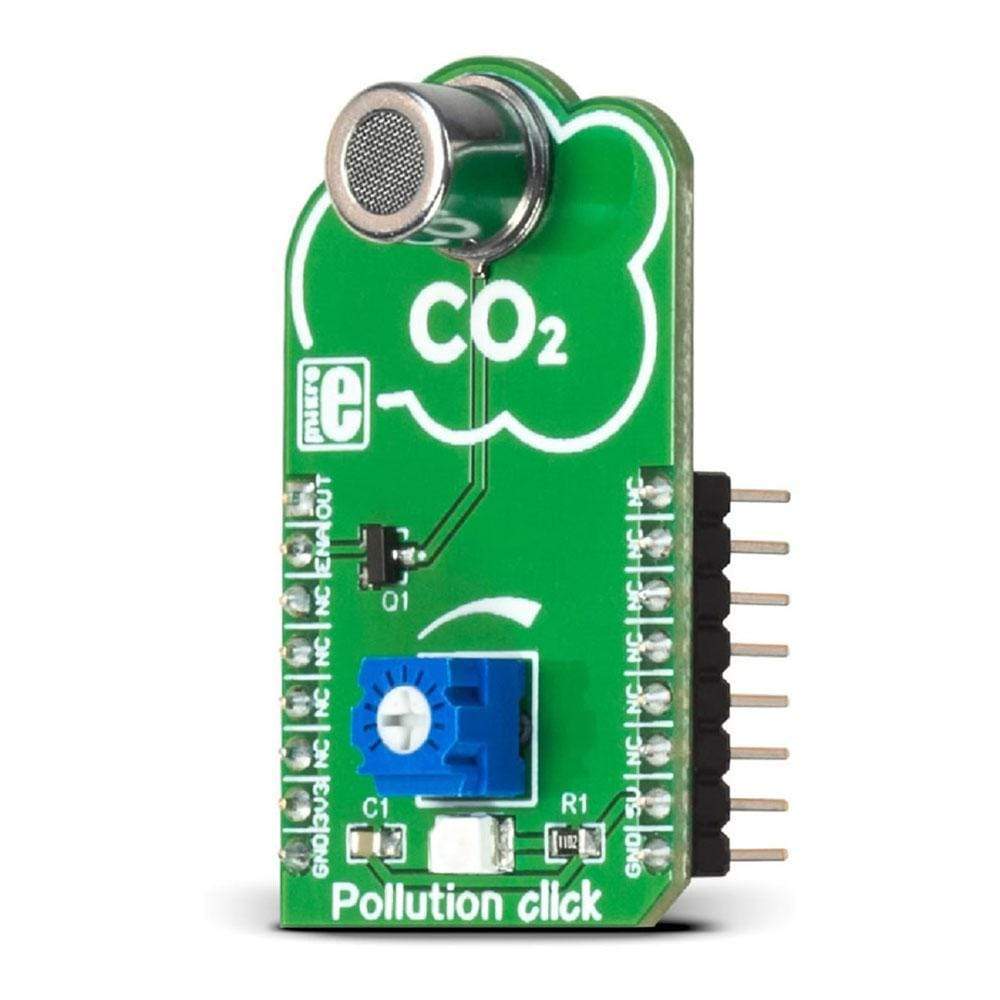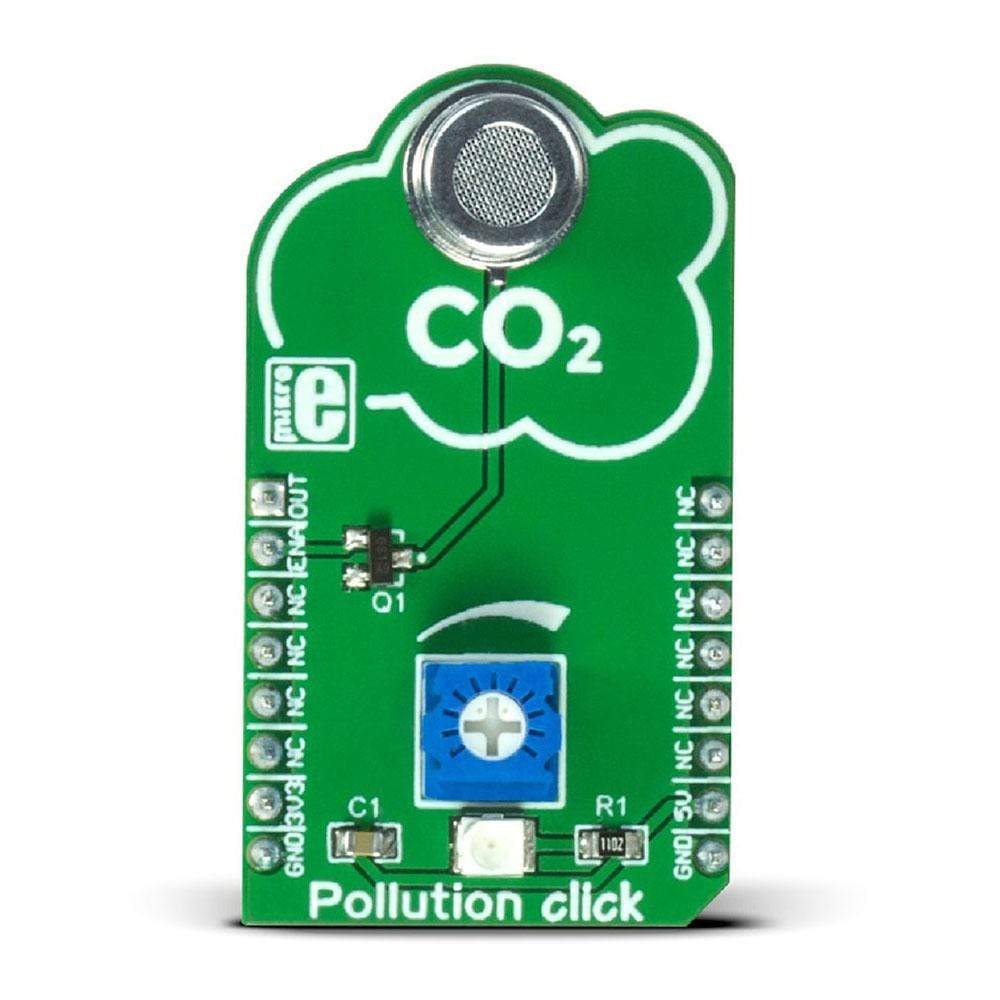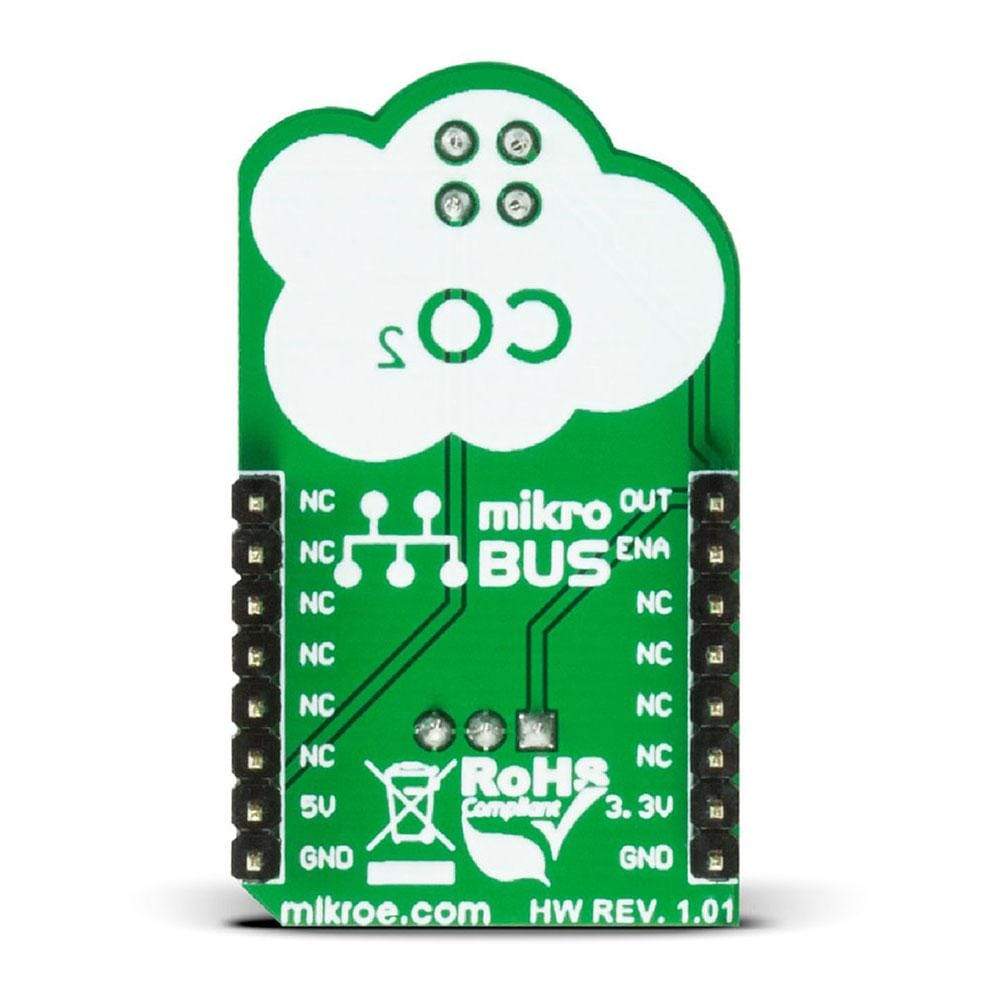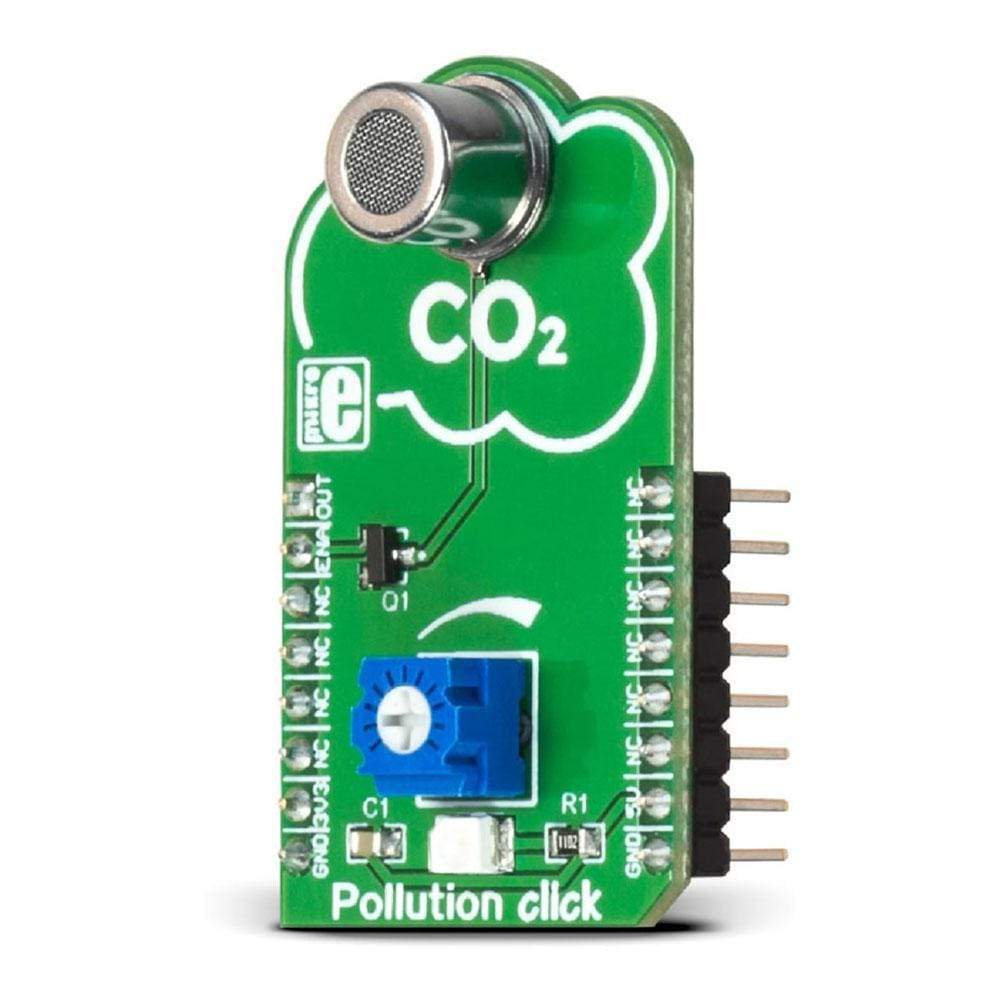
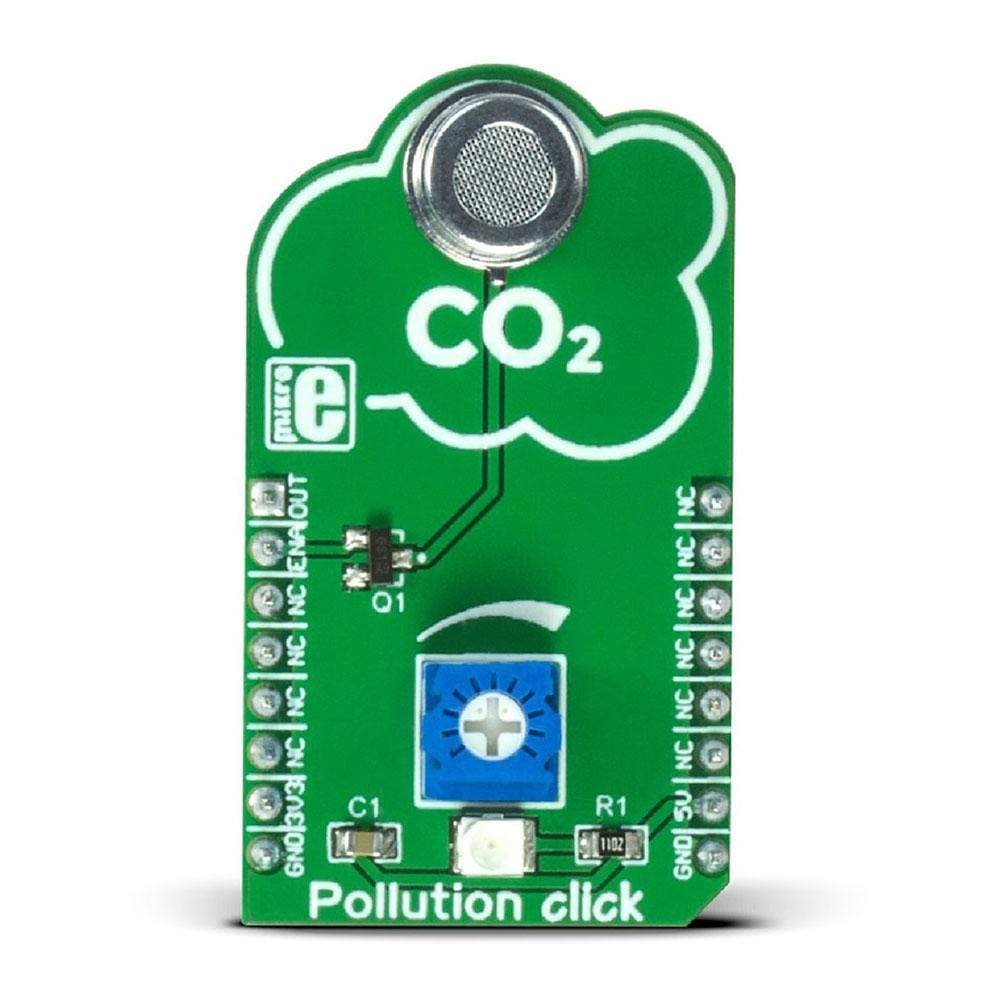
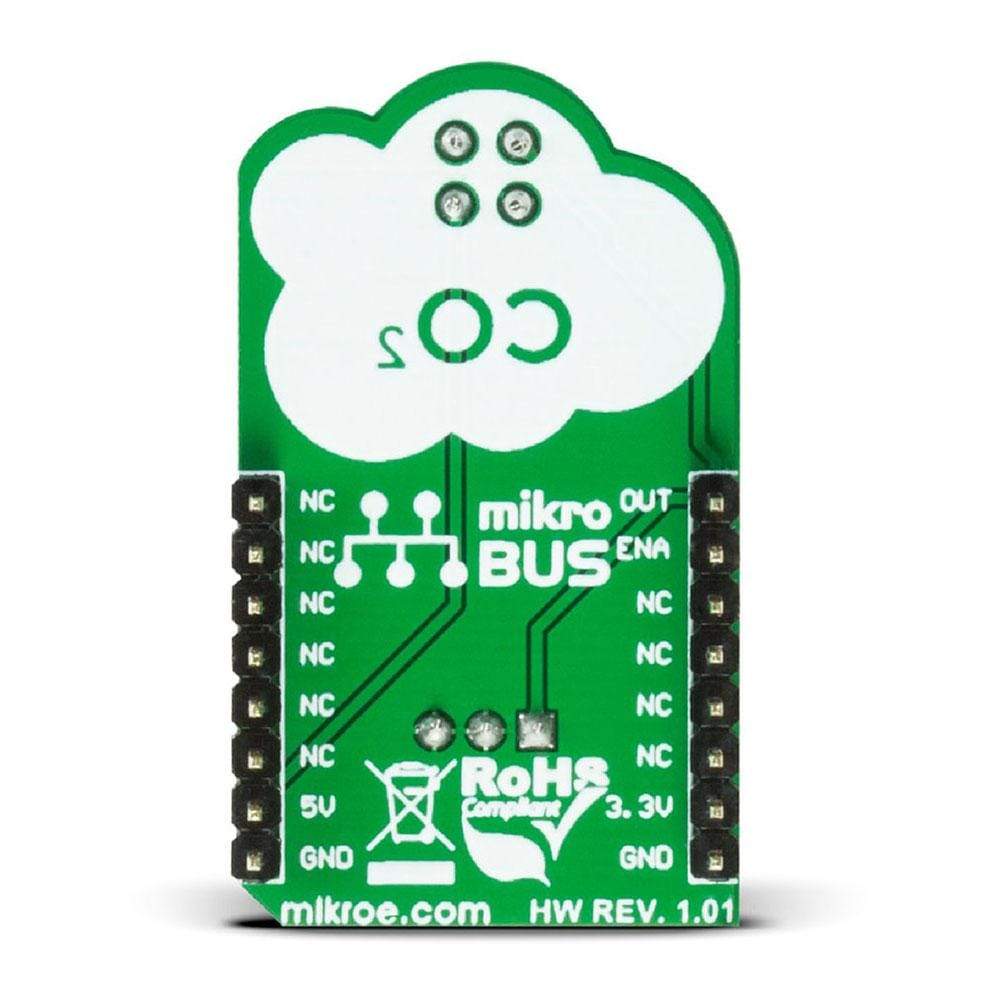
Overview
The Pollution Click Board™ has a high sensitivity to organic gases such as methanol (also known as formaldehyde), benzene, alcohol, toluene, etc. The Click Board™ carries the WSP2110 VOC gas sensor with the detection range of 1-50ppm (parts per million).
The Pollution Click Board™ is designed to run on a 5V power supply. It communicates with the target MCU via the AN and RST pins on the MikroBUSline.
Downloads
The Pollution Click Board™ has high sensitivity to organic gases such as methanal (also known as formaldehyde), benzene, alcohol, toluene, etc. The click carries the WSP2110 VOC gas sensor with the detection range of 1~50ppm (parts per million).
The Pollution Click Board™ is designed to run on a 5V power supply. It communicates with the target MCU over AN and RST pin on the mikroBUS™ line.
WSP2110 VOC GAS SENSOR
WSP2110 VOC gas sensor is a MOS type (metal oxide semiconductor) sensor that detects volatile organic compounds such as methanal, benzene, alcohol and other types of gases that can be harmful to one's health in high concentrations.
The concentration of the target gas affects the conductivity of the sensor. Higher concentration of the gas means the conductivity of the sensor gets higher as well.
For precise calibration, the sensor needs to preheat (once powered up, it takes 120h to reach the right temperature).
SENSOR'S SENSITIVITY
P1 potentiometer onboard is used for trimming the sensor's sensitivity. Enable the pin drive gate of heaters MOSFET switch to reduce power consumption when the click is not in use.
DETECTION RANGE
The detection range of the sensor is 1~50ppm (part per million). Parts per million is the numbers of parts of a component in 1 million parts of the gas mixture, it's the ratio of one gas to another.
VOLATILE ORGANIC COMPOUNDS
Volatile organic compounds or VOCs are organic chemicals. They have very high vapor pressure at room temperature, and some of them can be harmful to human health. As most people spend a lot of time indoors it's important to know if the quality of the air is good. With Pollution click you could always know if your indoor environment is healthy enough.
SPECIFICATIONS
| Type | Gas |
| Applications | Automatic exhaust devices, air cleaners, harmful gas detection devices, etc. |
| On-board modules | WSP2110 VOC gas sensor |
| Key Features | Detection range 1~50ppm, Sensitivity S Rs(in air)/Rs(in 10ppm toluene)≥3 |
| Interface | Analog,GPIO |
| Compatibility | mikroBUS |
| Click board size | M (42.9 x 25.4 mm) |
| Input Voltage | 5V |
PINOUT DIAGRAM
This table shows how the pinout of the Pollution Click Board™ corresponds to the pinout on the mikroBUS™ socket (the latter shown in the two middle columns).
| Notes | Pin |  |
Pin | Notes | |||
|---|---|---|---|---|---|---|---|
| Analog out pin | AN | 1 | AN | PWM | 16 | NC | |
| Enable sensor | RST | 2 | RST | INT | 15 | NC | |
| NC | 3 | CS | RX | 14 | NC | ||
| NC | 4 | SCK | TX | 13 | NC | ||
| NC | 5 | MISO | SCL | 12 | NC | ||
| NC | 6 | MOSI | SDA | 11 | NC | ||
| NC | 7 | 3.3V | 5V | 10 | +5V | Power supply | |
| Ground | GND | 8 | GND | GND | 9 | GND | Ground |
| General Information | |
|---|---|
Part Number (SKU) |
MIKROE-2516
|
Manufacturer |
|
| Physical and Mechanical | |
Weight |
0.02 kg
|
| Other | |
Country of Origin |
|
HS Code Customs Tariff code
|
|
EAN |
8606015079745
|
Warranty |
|
Frequently Asked Questions
Have a Question?
Be the first to ask a question about this.

